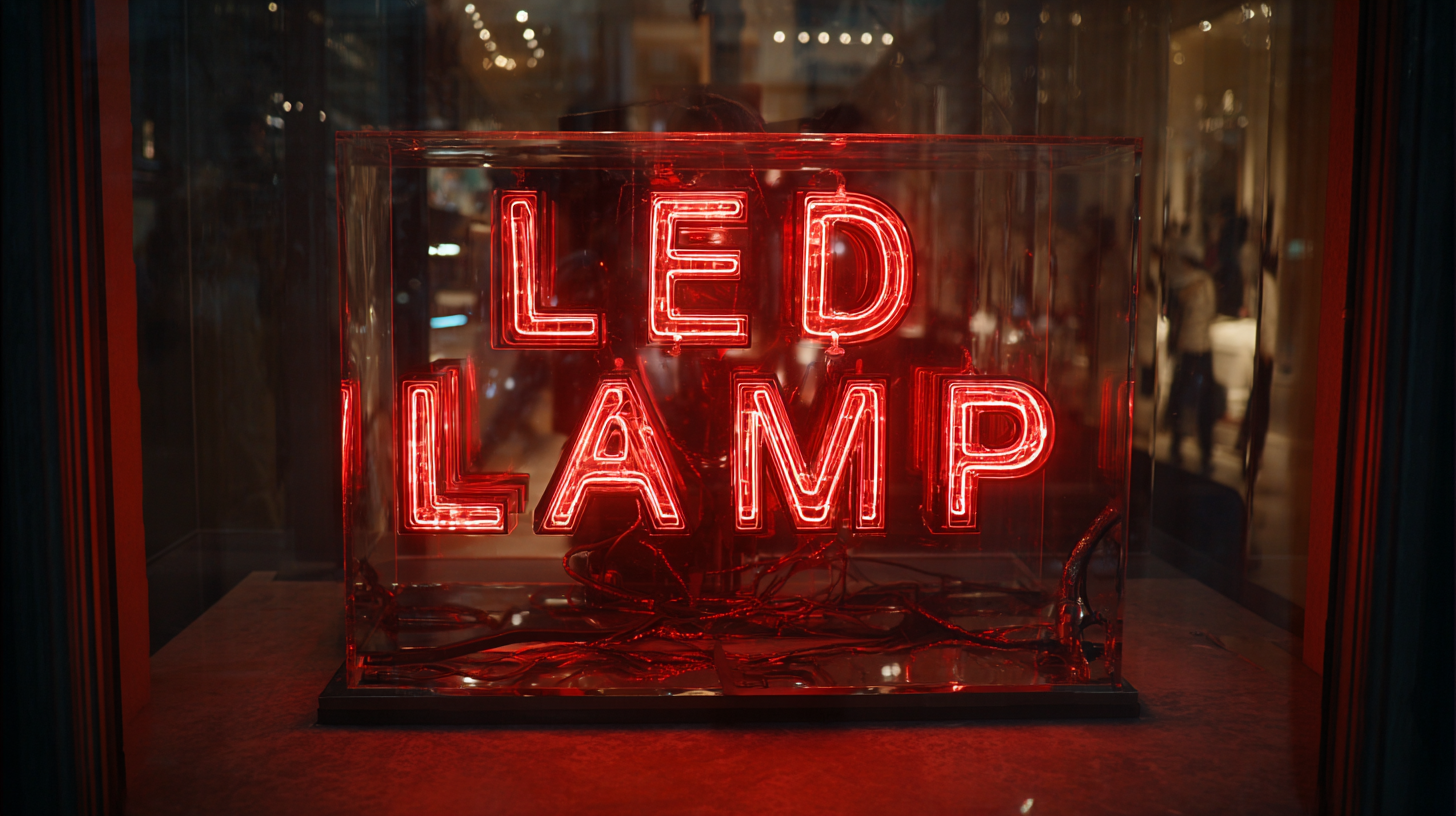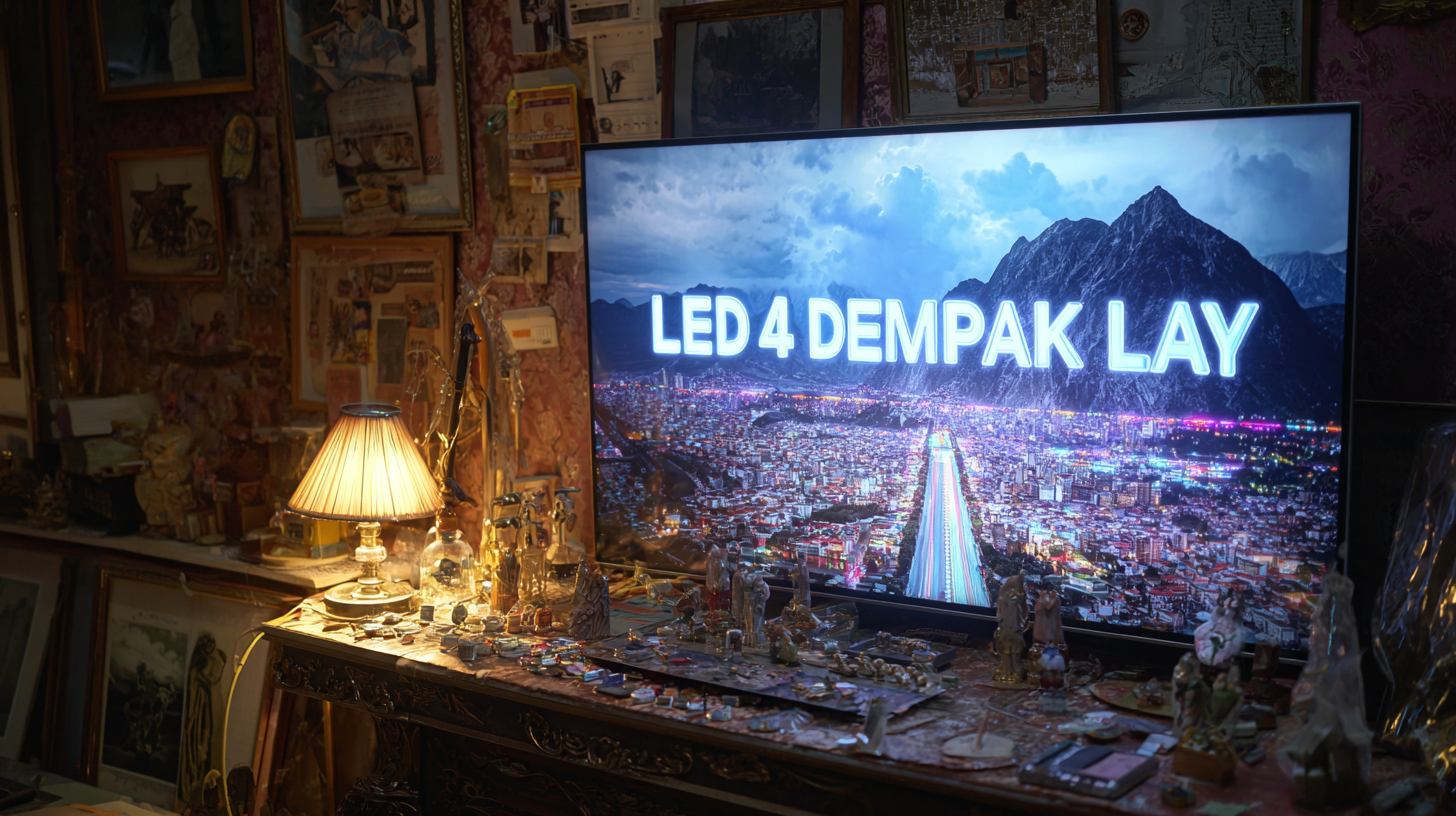Unveiling the Best Led Lamp Display A Comprehensive Comparison of Efficiency and Performance
In recent years, the demand for energy-efficient lighting solutions has surged, with LED lamp displays emerging as a key player in this transformation. According to a report by the U.S. Department of Energy, LED lighting offers energy savings of up to 75% compared to traditional incandescent bulbs, while also boasting a significantly longer lifespan—up to 25 times longer. As industries and consumers alike strive for sustainability, the importance of understanding the efficiency and performance of various LED lamp displays has never been greater. This comprehensive comparison aims to unveil the best options available in the market, emphasizing not only their energy efficiency but also their performance metrics. With the global LED market expected to reach $63 billion by 2024, it's crucial to equip ourselves with knowledge about the best LED lamp displays to make informed decisions that align with both economic and environmental goals.

Benefits of LED Lamp Displays: Energy Efficiency and Cost Savings Analysis
LED lamp displays have become increasingly popular due to their remarkable energy efficiency and the potential for significant cost savings. According to a report by the U.S. Department of Energy, LED lighting can reduce energy usage by up to 75% compared to traditional incandescent bulbs. This drastic reduction not only translates to lower electricity bills for consumers but also contributes to a lesser environmental impact, making LED lamps a sustainable lighting option.
In addition to energy efficiency, the longevity of LED displays further enhances their cost-effectiveness. The same report states that LEDs can last 25,000 hours or more, significantly outpacing the lifespan of incandescent and fluorescent lights, which average around 1,000 and 10,000 hours, respectively. This durability means fewer replacements and maintenance costs over time. Businesses and homeowners alike can benefit from these substantial savings, ultimately leading to a more sustainable and economically viable lighting solution that meets both performance and environmental goals.
Performance Comparison: Lumens per Watt and Longevity of LED Lamps
When comparing LED lamps, one of the most critical factors to consider is their efficiency, often measured in lumens per watt. This metric indicates how much light a lamp produces for each watt of energy consumed, making it an essential consideration for energy-conscious consumers. Higher lumens per watt ratings mean that the lamp is capable of providing more light while using less power, which not only translates to lower electricity bills but also reduces environmental impact. Many modern LED lamps boast impressive efficiency ratings, often exceeding 100 lumens per watt, making them a superior option compared to traditional lighting solutions.
Another key aspect of performance is the longevity of LED lamps. Typically, LED lights have an impressive lifespan, often lasting up to 25,000 hours or more. This longevity not only reduces the frequency of bulb replacements but also contributes to their overall cost-effectiveness in the long run. In contrast, traditional incandescent or fluorescent bulbs tend to have much shorter lifespans, resulting in more waste and higher maintenance costs. By selecting a high-efficiency LED lamp, consumers can enjoy the benefits of excellent luminosity and durability, making them the optimal choice for both home and office environments.

Color Rendering Index: How LED Displays Enhance Visual Experience
The Color Rendering Index (CRI) is a crucial metric for assessing the quality of light produced by LED lamps. A higher CRI indicates that a light source can accurately represent the colors of objects, making it especially important in settings such as art galleries, retail spaces, and homes where aesthetics matter. According to a report by the Illuminating Engineering Society, LED lights can achieve CRI values of up to 98, significantly outperforming traditional incandescent bulbs, which typically average around 100 but can have inconsistent performance across various color temperatures.
LED displays enhance visual experiences not only through CRI but also by offering various color temperature options ranging from warm whites to cool daylight. This adaptability allows users to create ambiance suited to different environments and activities. A study conducted by the Lighting Research Center shows that optimal color temperature paired with a high CRI can increase color perception by up to 50%, enhancing visual clarity and comfort in both commercial and residential settings. As technology evolves, the efficiency and performance of LED lighting solutions continue to solidify their role as the preferred choice for consumers seeking exceptional visual experiences.
Unveiling the Best Led Lamp Display A Comprehensive Comparison of Efficiency and Performance - Color Rendering Index: How LED Displays Enhance Visual Experience
| Type of LED Lamp | Wattage (W) | Lumen Output (lm) | Color Rendering Index (CRI) | Lifespan (Hours) | Energy Efficiency Rating |
|---|---|---|---|---|---|
| Standard LED Bulb | 10 | 800 | 80 | 25000 | A+ |
| Floodlight LED | 50 | 5000 | 70 | 30000 | A |
| Downlight LED | 15 | 1300 | 90 | 30000 | A+ |
| Smart LED Lamp | 9 | 800 | 95 | 25000 | A++ |
Environmental Impact: Sustainability and Reduced Carbon Footprint of LED Technology
LED technology has revolutionized the lighting industry, not just for its impressive efficiency but also for its remarkable environmental advantages. One of the key benefits of using LED lamps is their significantly reduced carbon footprint compared to traditional incandescent and fluorescent bulbs. LED lamps consume up to 75% less energy, leading to lower carbon emissions in the production of electricity. As a result, adopting LED lighting is a substantial step towards mitigating climate change and promoting sustainable energy practices.
Moreover, the longevity of LED lamps further enhances their sustainability. With an average lifespan of 25,000 to 50,000 hours, LEDs outlast their competitors, which means fewer replacements and ultimately less waste in landfills. They also contain no harmful materials like mercury, which can be found in CFLs, making them a safer choice for the environment. By transitioning to LED technology, consumers not only benefit from decreased electricity bills but also contribute positively to the planet's health, reflecting a growing commitment to sustainability in everyday choices.
Market Trends: The Growing Adoption of LED Displays in Various Industries
The adoption of LED displays has surged across various industries, reflecting a broader market trend towards energy efficiency and enhanced visual performance. From retail environments that rely on eye-catching advertising to transportation hubs where information needs to be conveyed swiftly and clearly, LED displays are proving to be an indispensable asset. Their low energy consumption paired with high brightness and clarity makes them an appealing option for businesses looking to maximize impact while minimizing costs.
In addition to the retail and transportation sectors, the resurgence of LED technology can also be seen in the corporate world, where dynamic displays are used for presentations and live events. The ability of LED screens to deliver vibrant colors and sharp images has redefined how companies communicate and engage with their audience. As more organizations recognize the benefits of LED displays, including longevity and flexibility, the trend is expected to continue growing. This adoption not only enhances visual engagement but also supports sustainability initiatives, as businesses seek to reduce their carbon footprint while improving operational efficiency.

